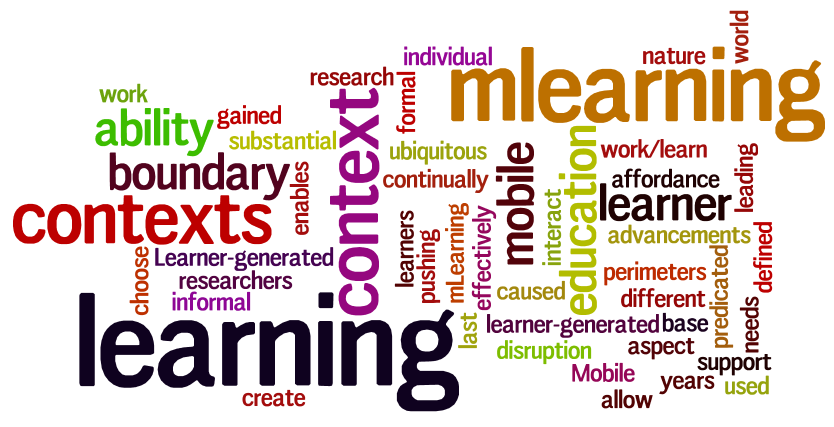Vickel Narayan
The mobilised learner: Heutagogy and mobile
social media
THESIS DOWNLOAD:
Download pdf of complete thesis:
Abstract
The rapid growth and enhancement of mobile and social media tools, and their affordances, offer significant opportunities for creative and innovative design of learning experiences. The purpose of this study was to investigate the affordances of mobile and social media tools that could enable the design of a first year journalism course, which allowed the learners the opportunity to direct and determine their own learning.
Three learning frameworks provided the theoretical underpinnings for the study: Pedagogy 2.0, heutagogy, and mobile learning. A design-based research approach was used to conduct the study and to create the learning solution. A set of draft design principles was created from the theory, research literature and consultations with practitioners. In collaboration with the practitioners, the draft design principles were incorporated in the design and implementation of the learning solution, and were refined over two iterations. At the end of each iteration, formative evaluations were conducted to identify areas for improvement in subsequent implementations. Data were collected from the students in the course using an online anonymous survey, focus groups, interviews, researcher reflections, and student and teacher created artefacts. These data were coded using the first two phases of data reduction and display and then analysed using a constant comparative method of analysis.
The findings in the study suggest that mobile and social media affordances increased learner autonomy over the learning process and mobility in purposively designed learning environments using social constructivist pedagogies. Mobile and social media enabled increased learner access to teachers, peers, people, content, communities and networks to create content and new knowledge in meaningful and contextually relevant spaces through collaboration and participation—shifting the learning from knowing (knowledge) to ‘learning to become’. The findings in the study, however, suggest that for learners to achieve learning benefits with mobile and social media tool, they need to be scaffolded in the process for effective and pedagogic use of the tools—requiring a reconceptualisation from social to academic application. The key outcome of the study is a set of refined design principles for educators to guide the use of mobile and social media in contextually embodied learning and teaching

Publications
Narayan, V., Herrington, J. & Cochrane, T. (2018) Design principles for heutagogical learning: Implementing student-determined learning with mobile and social media tools. Australasian Journal of Educational Technology, 35 (3). pp. 86-101.
(Link to paper)
Narayan, V., Herrington, J. & Cochrane, T. (2018) Designing for learning with mobile and social media tools - A pragmatic approach.In: Proceedings ASCILITE 2018 - Open Oceans: Learning without borders, 25 - 28 November 2018, Geelong, Australia pp. 214-223. (Link to paper)
Narayan, V. & Herrington, J. (2014) Towards a theoretical mobile heutagogy framework. In: Proceedings ASCILITE 2014 - Rhetoric and Reality, 23 - 26 November 2014, Dunedin, New Zealand pp. 150-160. (Link to paper)